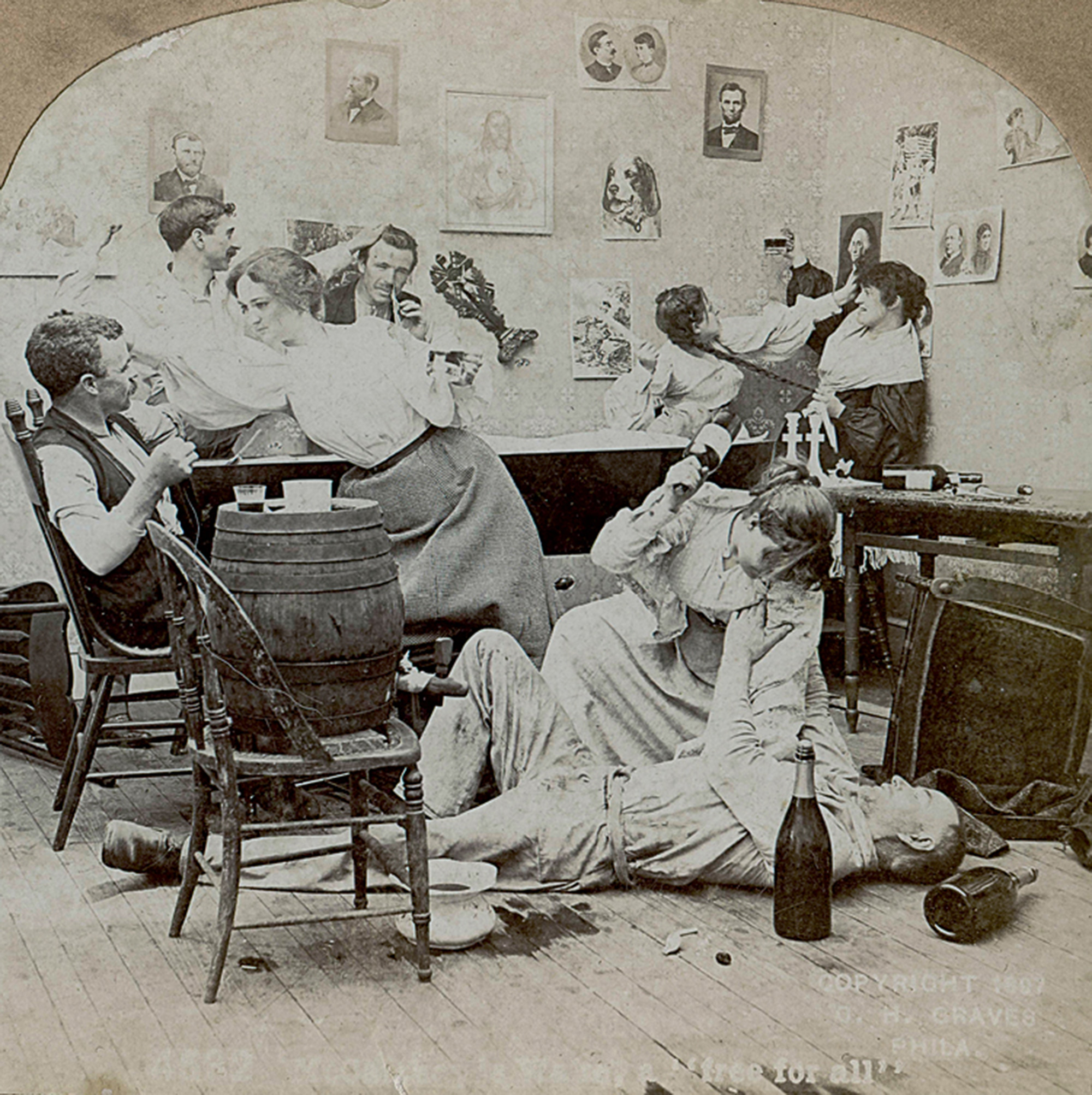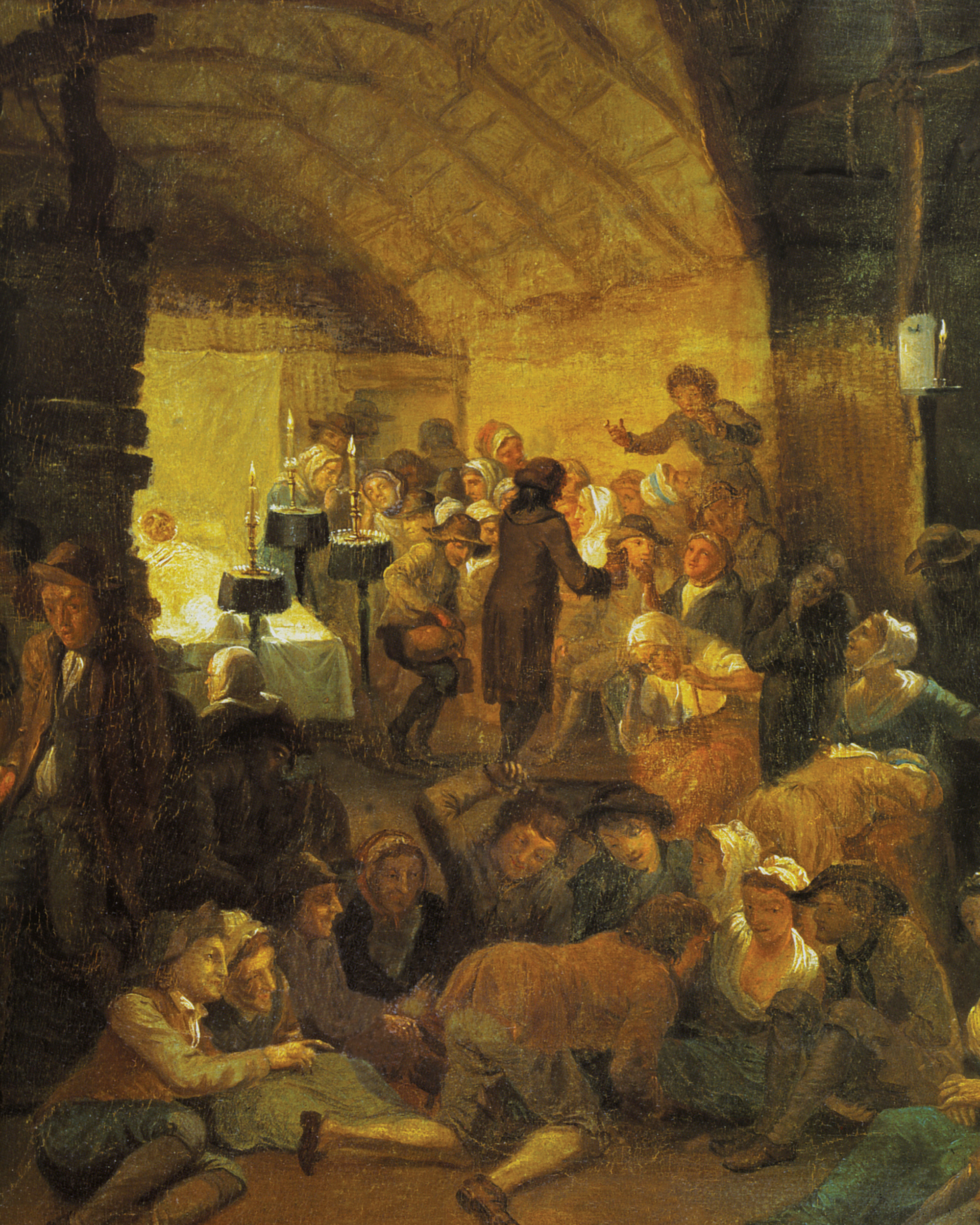Irish Wake Amusements: An Introduction
Funeral parlor games
Joanne Laws

The wake, as a liminal site of ritual and social function, has persisted as a source of anthropological significance, long after its decline as a practice in the West. The Irish wake, in particular, is preserved in many documented forms, from the archival to the literary. These enshrinements of culture collectively construct an image of the wake as an institution of Irish country life, composed of disparate fragments, wholeheartedly sacred and simultaneously unhinged.
The nineteenth-century wake house was an arena for an array of activities, each circulating at different speeds, from the ceremonial structure of ritual and prayer to the formlessness of frivolity and ensuing chaos. Quite unlike modern funeral ceremonies, the traditional Irish wake was a time for celebration and merriment, when feasting, music, storytelling, games, and matchmaking took place. Ultimately these cluiche caointeach (games of lamentation) were a means of occupying a restless crowd, of distracting the bereaved, and of preventing people from falling asleep during the night-long vigil. Athletic games of agility, strength, and endurance occupied the men, and often took place outside the house in some adjacent field. The competitiveness of these contests could not be under-estimated, and men travelled from neighboring parishes to take on new opponents. Many of the wake games were, in effect, elaborate theatrical renditions of everyday events, from the buying and selling of animals to the orchestration of ceremonial affairs such as mock weddings. Men would often dress as priests, read the sacraments, and hear “confessions.” Strictly condemned by the Catholic Church, the wake, which served a multitude of social functions, was an institution whose very existence was a public display of subversion and anarchy. Many theories trace the games’ pre-Christian origins to ancient Greece and the contests held to honor the death of a king or warrior, paying homage to the heroic status of the deceased by re-enacting his military prowess. Some historians have proposed that much of the imagery and symbolism occurring within the fabric of the Irish wake has Druidic origins.[1]
It is generally acknowledged that the wake games provided an outlet for a community’s grief; a space to perform a collective acknowledgement of loss and to show respect, not just for the deceased and his family but for old ancestors and ancient customs. Excessive public displays, such as the hiring of keeners to perform unrestrained laments for the deceased, were superstitious practices designed to appease the spirits of the dead so that they would provide safe passage for the departed soul. In this way, the wake can be viewed as a marginal period of suspension between life and death; a Bakhtinian carnivalesque spectacle, where normal life is temporarily abandoned and replaced by existential chaos in the face of human mortality. For the contemporary reader, these wake practices seem anachronistic, amusing, or even unnerving, but inevitably provoke reflection on modern practices and rituals that ultimately determine how death is confronted, both physically and existentially.

In 1967, Seán Ó Súilleabháin (working on behalf of the Irish Folklore Commission) compiled and published Irish Wake Amusements; a detailed archive of hundreds of games and activities occurring in wake houses around Ireland in the nineteenth and early twentieth centuries. From card-playing, storytelling and matchmaking to athletic contests, trickery, and tongue-twisters, Ó Súilleabháin’s rigorous research affectionately relayed a rich spectrum of amusements. The following extract from the book, now out of print, describes the boisterous activities that typically occurred when high spirits, a captive audience, and the dimly lit corners of the wake house provided agreeable conditions for some epic mischief making to unfold.
- Lady Francesca Speranza Wilde, Ancient Legends, Mystic Charms, and Superstitions of Ireland (London: Ward and Downey, 1887), p. 154.
Joanne Laws is a critical writer based in Ireland. She has previously published writing and reviews in Afterimage, Allotrope, Axis, Visual Artists’ News Sheet, Paper Visual Journal, Shower of Kunst, and Billion.
Spotted an error? Email us at corrections at cabinetmagazine dot org.
If you’ve enjoyed the free articles that we offer on our site, please consider subscribing to our nonprofit magazine. You get twelve online issues and unlimited access to all our archives.